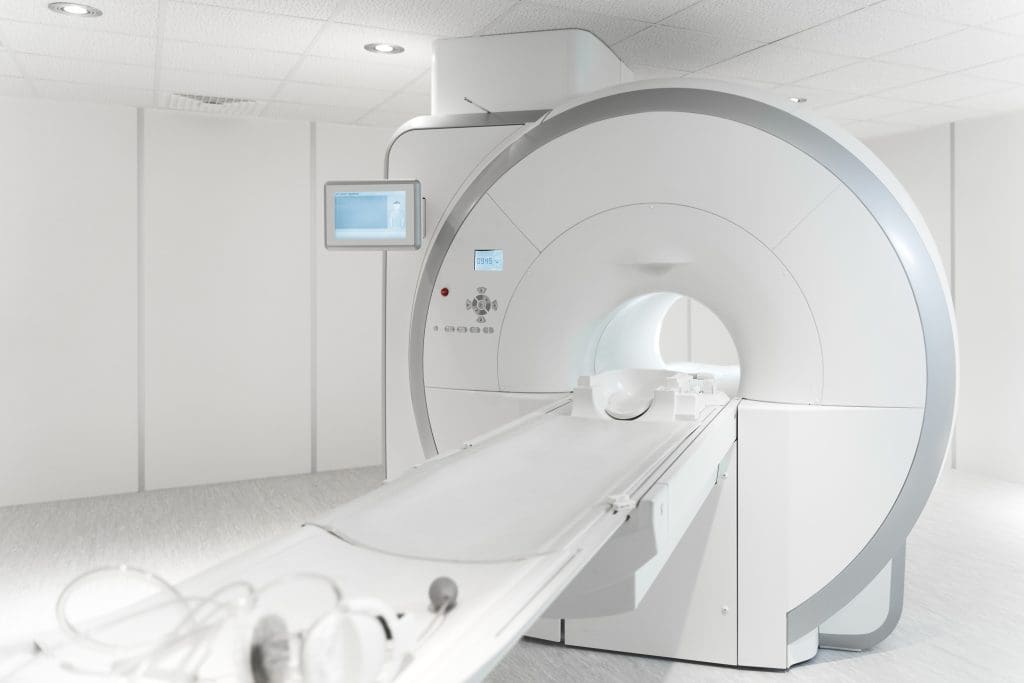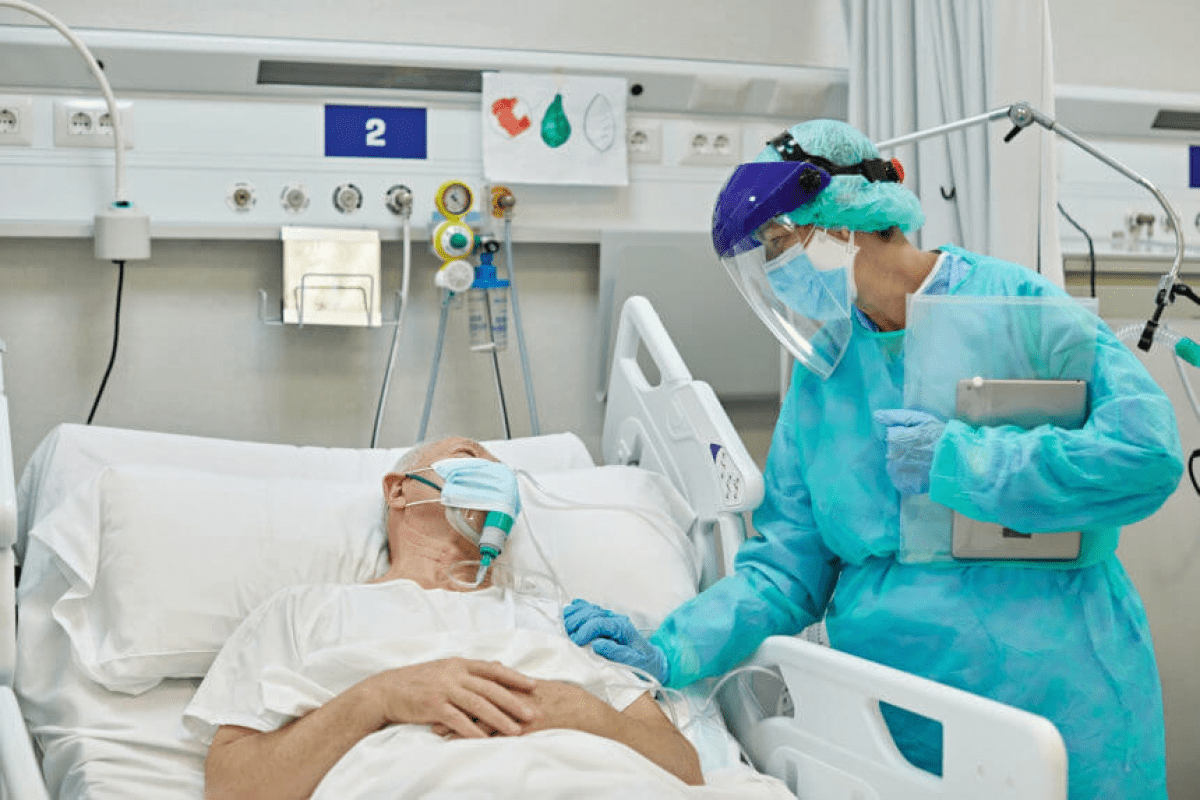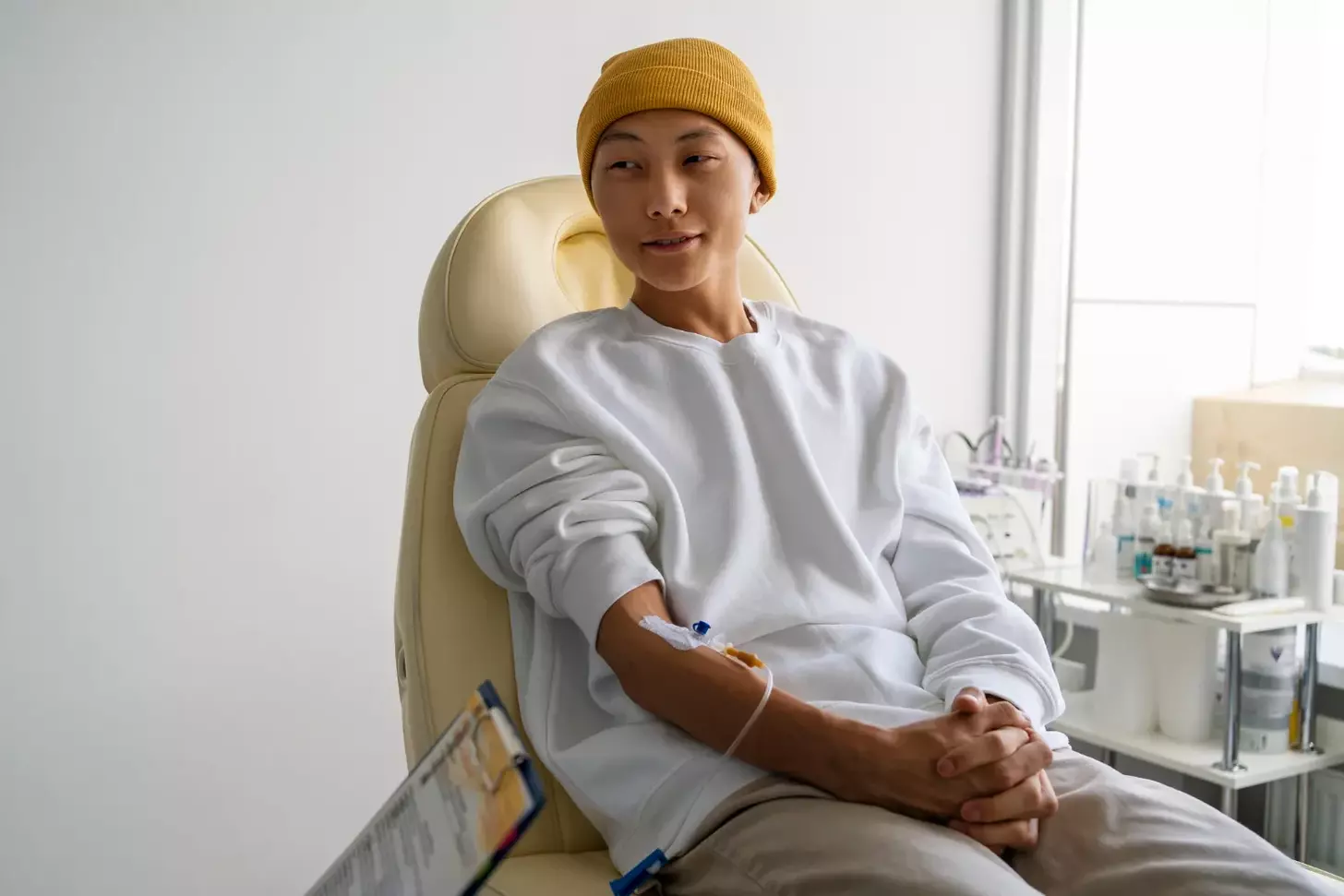Last Updated on November 27, 2025 by Bilal Hasdemir
Recent studies have shown that radioactive iodine therapy is linked to a higher risk of cancer. This includes leukemia and solid tumors. The findings were reported in a Journal. This raises the important question, “What cancers can you get after radioactive iodine? and highlights the need for awareness.
Patients need to know the risks of RAI therapy. While it’s effective for some thyroid conditions, the cancer risk is real.
Key Takeaways
- Radioactive iodine therapy is linked to an increased risk of several cancers.
- Leukemia and solid tumors are among the possible cancer risks.
- Knowing these risks is key for patients getting RAI therapy.
- Recent studies show the need to watch for long-term effects.
- Patients should talk about these risks with their healthcare provider.
Understanding Radioactive Iodine Therapy

Radioactive iodine, or I-131, is a special form of iodine used in medicine. It helps treat thyroid problems like cancer and hyperthyroidism. This treatment is key in managing these conditions.
What is Radioactive Iodine (I-131)?
Radioactive iodine (I-131) is a special iodine isotope that the thyroid gland absorbs. Its radioactive nature helps destroy thyroid tissue. This makes it a good treatment for thyroid cancer and hyperthyroidism.
The treatment is specifically targeted. It aims to harm the thyroid gland less while treating it.
Common Medical Uses and Administration Methods
Doctors use radioactive iodine therapy for thyroid cancer and hyperthyroidism. It’s given orally, in capsule or liquid form. The dose depends on the patient’s health and disease severity.
The oral administration of I-131 lets it get into the bloodstream. Then, it goes to the thyroid gland. This method delivers a strong dose of radiation to the thyroid. It tries to protect other parts of the body from radiation.
How Radioactive Iodine Therapy Works in the Body
When you take radioactive iodine, it goes through your blood. It then finds its way to thyroid cells. This makes the treatment very effective for thyroid problems.
Mechanism of Action and Cellular Uptake
Thyroid cells naturally grab iodine. Inside these cells, the radioactive iodine, I-131, starts to damage DNA. This damage kills the cells, which is key in treating thyroid cancer or hyperthyroidism.
Distribution and Concentration in Tissues
After you take it, radioactive iodine spreads through your blood. It mainly goes to the thyroid gland. This allows for a focused treatment. Other parts of your body might get some, but not much.
How much radioactive iodine goes to different tissues depends on several things. These include thyroid-stimulating hormone (TSH) and how well your thyroid works.
Elimination Pathways and Half-life
Your body gets rid of radioactive iodine mostly through urine. A bit goes out in sweat, saliva, and feces. The time it takes for half of it to go away is about a few days.
Knowing how your body gets rid of radioactive iodine is important. It helps keep you safe and prevents others from being exposed.
Primary Conditions Treated with Radioactive Iodine
RAI therapy is mainly used for treating differentiated thyroid cancer and hyperthyroidism. It’s a key treatment for these conditions. It helps target thyroid-related issues effectively.
Differentiated Thyroid Cancer Management
Differentiated thyroid cancer, like papillary and follicular types, is treated well with RAI therapy. It uses radioactive iodine to kill leftover thyroid tissue after surgery. This lowers the chance of cancer coming back.
Key aspects of RAI therapy in differentiated thyroid cancer management include:
- Ablation of residual thyroid tissue post-surgery
- Treatment of metastatic disease
- Follow-up diagnostic scans to monitor disease recurrence
Hyperthyroidism and Graves’ Disease Treatment
RAI therapy is also used for hyperthyroidism, mainly Graves’ disease. The aim is to lower thyroid hormone levels by destroying thyroid tissue.
| Condition | Treatment Goal | RAI Therapy Role |
| Differentiated Thyroid Cancer | Ablate residual tissue, treat metastasis | Destroy thyroid tissue, reduce recurrence risk |
| Hyperthyroidism/Graves’ Disease | Reduce thyroid hormone production | Destroy part of the thyroid gland |
Other Less Common Applications
Though rare, RAI therapy is also considered for other thyroid issues. This includes some thyroid nodules and specific thyroid disorders.
RAI therapy’s ability to treat various thyroid conditions highlights its role in nuclear medicine. Knowing which conditions it treats helps doctors improve patient care and results.
Radiation Exposure and Carcinogenesis
Radioactive iodine therapy is good for some thyroid issues but has a risk. It can cause cancer because of the ionizing radiation. This radiation can harm DNA, leading to cancerous changes.
DNA Damage Mechanisms from Ionizing Radiation
Ionizing radiation from radioactive iodine can break DNA strands. This leads to genetic mutations. These mutations can mess up cell function and might cause cancer.
Key mechanisms of DNA damage include:
- Double-strand breaks in DNA
- Base damage and point mutations
- Cross-linking between DNA strands
Cellular Repair Processes and Mutations
Cells try to fix DNA damage from ionizing radiation. But, they don’t always get it right. Errors in repair can cause mutations. If these mutations happen in important genes, they can lead to cancer.
The way cells repair DNA can vary. It depends on genetics. Some people might not be as good at fixing DNA damage, making them more at risk for cancer.
Latency Period Between Exposure and Cancer Development
The time between getting radioactive iodine and developing cancer can be long. It can take years or even decades. This is why patients need to be checked for a long time after treatment.
Factors influencing the latency period include:
- The dose of radioactive iodine given
- The patient’s age at treatment
- How well someone can handle radiation
Knowing these things helps manage risks from radioactive iodine. It also helps find cancer early.
Research on Secondary Malignancies After Radioactive Iodine Therapy
Radioactive iodine therapy is effective for some thyroid issues. But, it raises concerns about causing secondary cancers. Many studies have looked into this risk.
Major Epidemiological Studies and Findings
Large studies have explored the link between radioactive iodine therapy and secondary cancers. A 2022 study in a Journalfound a strong link between the therapy’s dose and cancer risk.
In 2019, a study in JAMA Internal Medicine looked at patients treated with radioactive iodine. It found they had a higher risk of secondary cancers than the general population.
Dose-Dependent Relationship with Cancer Risk
Research has shown a clear link between the dose of radioactive iodine and cancer risk. Higher doses lead to a greater risk of secondary malignancies. This suggests a direct relationship between dose and cancer risk.
Key Findings on Dose-Dependent Cancer Risk:
| Dose Range (mCi) | Cancer Type | Relative Risk |
| 100-150 | Leukemia | 2.5 |
| 150-200 | Salivary Gland Cancer | 3.2 |
| 200+ | Bladder Cancer | 4.1 |
Comparison with Background Cancer Rates
To grasp the risk of radioactive iodine therapy, researchers compare it to general cancer rates. Studies show that while the risk is low, some groups treated with radioactive iodine face a higher cancer risk.
This comparison helps doctors and patients make informed decisions about treatment. It balances the therapy’s benefits and risks.
Leukemia and Blood Cancers Following RAI Treatment
Radioactive iodine treatment is good for some thyroid issues but can lead to leukemia and blood cancers. This is something patients and doctors must think about when deciding on RAI therapy.
Acute Myeloid Leukemia Risk Factors
AML is a big worry after RAI treatment. Research shows that higher doses of radioactive iodine raise AML risk. A Journal found in 2022 a strong link between RAI and AML.
AML risk factors after RAI include:
- The dose of radioactive iodine given
- How often RAI treatments are done
- How likely a person is to get AML
Chronic Myeloid Leukemia Associations
CML is linked to RAI treatment, but the risk is lower than AML. It can take years for CML to show up after RAI.
Studies suggest CML risk might depend on the dose. So, it’s important to think about the dose and need for more treatments.
Bone Marrow Exposure and Damage Mechanisms
The bone marrow is very sensitive to radiation. Exposure to radioactive iodine can harm it, raising leukemia risk. The damage comes from:
- Direct radiation harm to bone marrow cells
- Genetic changes that can cause leukemia
- Damage to the bone marrow’s ability to make blood cells
Knowing how RAI treatment works is key to understanding its risks. It helps in finding ways to reduce these risks.
Salivary Gland and Oral Cavity Cancers After RAI
Using radioactive iodine (RAI) to treat thyroid conditions has raised concerns. RAI therapy aims to destroy thyroid tissue. This is done for treating thyroid cancer or managing hyperthyroidism.
One major risk of RAI therapy is its effect on the salivary glands. Radioactive iodine can damage these glands. This damage may increase the risk of cancer.
Concentration of Radioactive Iodine in Salivary Tissue
Radioactive iodine tends to gather in the salivary glands. This includes the parotid, submandibular, and sublingual glands. The glands’ high iodine affinity makes them vulnerable to radiation damage from RAI.
The parotid gland is at high risk. Studies show that radioactive iodine in the parotid gland can cause inflammation and damage. This may lead to long-term consequences like cancer.
Parotid, Submandibular, and Sublingual Gland Risks
Each major salivary gland faces different risks with RAI exposure. The parotid gland is most at risk due to its size and location. But, the submandibular and sublingual glands are also at risk, though to a lesser degree.
| Salivary Gland | Risk Level | Common Effects of RAI |
| Parotid | High | Inflammation, Sialadenitis |
| Submandibular | Moderate | Glandular swelling, Pain |
| Sublingual | Low to Moderate | Dry mouth, Reduced saliva production |
Preventive Measures During Treatment
To lessen RAI therapy risks, several preventive steps can be taken. Patients are often advised to drink plenty of water. This helps flush out radioactive iodine. Sialagogues, which stimulate saliva production, can also be used to reduce radioactive iodine in the salivary glands.
It’s vital for patients undergoing RAI therapy to follow their healthcare provider’s advice. This helps minimize exposure and manage side effects.
By understanding the risks and taking proactive steps, patients can lower their chance of developing salivary gland and oral cavity cancers after RAI therapy.
Urinary System Cancers Related to Radioactive Iodine Exposure
Radioactive iodine therapy is good for some thyroid issues but can lead to other cancers. This includes cancers in the urinary system. Studying this link is key because it affects patients’ long-term health.
Bladder Cancer Incidence and Mechanisms
Studies show a link between radioactive iodine therapy and bladder cancer. A 2022 Journal study found a higher bladder cancer rate in treated patients. The reason is the radiation from iodine in urine that hits the bladder.
Kidney Exposure During Excretion
The kidneys filter out radioactive iodine. This process exposes them to radiation, which can harm them over time. This risk is a concern for kidney problems, including cancer.
Hydration Strategies to Reduce Risk
Drinking lots of water can help lower risks from radioactive iodine therapy. It helps remove iodine faster, reducing bladder and kidney exposure. Patients are told to drink plenty before and after treatment.
Knowing the risks and taking steps can help protect against urinary system harm from radioactive iodine therapy.
Additional Secondary Malignancies of Concern
Radioactive iodine therapy is used to treat some thyroid conditions. But it can also raise the risk of other cancers. This section will look at cancers linked to this treatment. We aim to understand the risks involved.
Breast Cancer Considerations in Female Patients
Research shows a link between radioactive iodine therapy and breast cancer in women. A study in a Journal found a higher breast cancer rate in women treated with radioactive iodine.
Key findings include:
- Increased risk of breast cancer in women who received radioactive iodine therapy
- Higher incidence of breast cancer in younger women
- Potential dose-dependent relationship between radioactive iodine and breast cancer risk
Gastrointestinal Tract Cancers from Swallowed Radiation
Radioactive iodine can be swallowed, exposing the gut to radiation. Studies suggest this may raise the risk of cancers in the stomach, colon, and rectum.
Notable aspects of gastrointestinal tract cancers following radioactive iodine therapy include:
- Potential increased risk of stomach, colon, and rectal cancers
- Possible correlation between the dose of radioactive iodine and the risk of gastrointestinal cancers
- Importance of monitoring patients for gastrointestinal symptoms post-treatment
Lung and Respiratory System Exposure
The lungs can be exposed to radioactive iodine, which increases lung cancer risk. This is true for patients with thyroid cancer that has spread to the lungs.
| Cancer Type | Relative Risk | Confidence Interval |
| Lung Cancer | 1.5 | 1.2-1.8 |
| Other Respiratory Cancers | 1.2 | 0.9-1.5 |
Bone and Soft Tissue Malignancies
There’s evidence that radioactive iodine therapy may also increase the risk of cancers in bones and soft tissues. More research is needed to fully grasp these risks.
Key areas of concern include:
- Potential increased risk of sarcomas
- Possible radiation-induced damage to bone and soft tissue
- Need for long-term follow-up to monitor for these rare but serious cancers
Special Population Considerations and Risk Factors
Radioactive iodine therapy is effective for some thyroid conditions but has unique risks for certain groups. Its effects can differ greatly among different people and genetic backgrounds.
Age-related sensitivity differences
Children and young adults might face higher risks from radioactive iodine therapy. Studies suggest that the age at treatment can affect the risk of secondary cancers.
A study in a Journal found younger patients at higher cancer risk after treatment. This shows the need for extra care and monitoring in these age groups.
Cumulative dose effects from multiple treatments
Those who get multiple treatments face a higher risk of secondary cancers. The total dose of radioactive iodine can greatly affect cancer risk.
- Increased risk with higher cumulative doses
- Importance of monitoring and follow-up care
- Consideration of alternative treatments when possible
Genetic susceptibility factors
Genetic factors are key in determining cancer risk after radioactive iodine therapy. Some genetic mutations make people more susceptible to radiation-induced cancer.
Knowing these genetic factors helps identify high-risk patients. It also helps tailor treatment plans.
Pre-existing cancer history implications
Patients with a cancer history may face unique risks with radioactive iodine therapy. Their risk of secondary malignancies can be influenced by their cancer history.
It’s vital to carefully evaluate and monitor these patients. This helps reduce risks from radioactive iodine treatment.
Conclusion: Balancing Treatment Benefits and Cancer Risks
Radioactive iodine therapy is key in treating thyroid issues like cancer and hyperthyroidism. It’s effective, but worries about cancer risks have risen. Studies show we must weigh the benefits against the risks, mainly for some groups.
Research in a Journal Internal Medicine stresses the need for a careful look at the risks and benefits. We must consider how well the treatment works against the chance of getting leukemia or other cancers.
Healthcare providers can help patients understand the risks and benefits of radioactive iodine therapy. This knowledge helps patients make choices based on their own health and risks.
Doing a detailed risk-benefit analysis is vital. It looks at age, total dose, and genetic risks. This way, doctors can give the best care while reducing risks from the therapy.
FAQ
What is radioactive iodine therapy?
Radioactive iodine therapy, also known as RAI therapy or I-131 therapy, is a treatment. It uses radioactive iodine to kill thyroid tissue, including cancer cells.
How is radioactive iodine therapy administered?
It’s given orally, as a capsule or liquid. This liquid contains the radioactive isotope I-131.
What are the primary conditions treated with radioactive iodine therapy?
It treats differentiated thyroid cancer and hyperthyroidism. This includes Graves’ disease.
How does radioactive iodine therapy work in the body?
It works by being absorbed by thyroid cells. There, it emits radiation that kills the thyroid tissue, including cancer cells.
What are the primary cancer risks associated with radioactive iodine therapy?
The main risks are leukemia, salivary gland cancer, and other cancers. These include breast and gastrointestinal tract cancers.
Is there a risk of leukemia after radioactive iodine therapy?
Yes, there’s a risk of leukemia, mainly acute myeloid leukemia. This risk increases with higher doses and more treatments.
Can radioactive iodine therapy cause salivary gland cancer?
Yes, it can cause salivary gland cancer. The radioactive iodine damages the salivary gland tissue.
Are there any preventive measures to reduce the risk of salivary gland damage during radioactive iodine therapy?
Yes, you can reduce the risk. Stay hydrated, use sour candies or lemon juice, and avoid anticholinergic medications.
Is there a risk of urinary system cancers after radioactive iodine therapy?
Yes, there’s a risk of urinary system cancers, like bladder cancer. The radioactive iodine can damage the bladder tissue.
Are there any special considerations for certain populations undergoing radioactive iodine therapy?
Yes, some groups need special care. This includes children, adolescents, and those with a history of radiation exposure or genetic issues.
How can the risks associated with radioactive iodine therapy be minimized?
Minimize risks by using the lowest effective dose. Stay hydrated and follow preventive measures to avoid salivary gland damage and other cancers.






